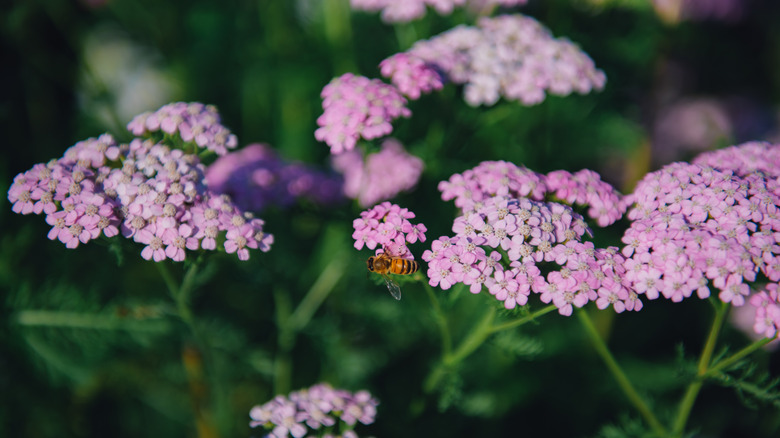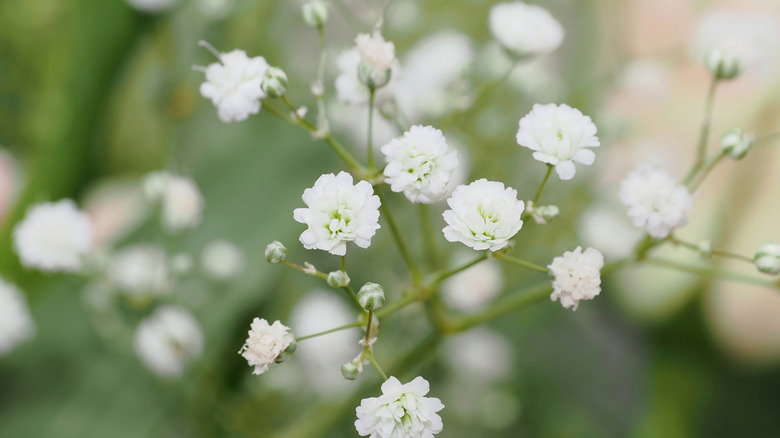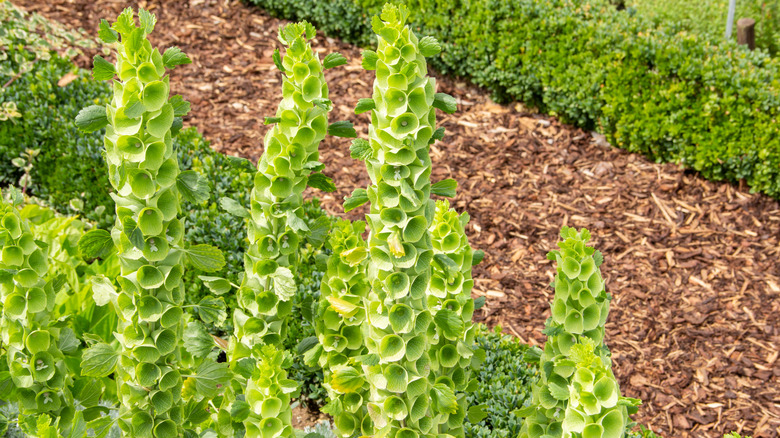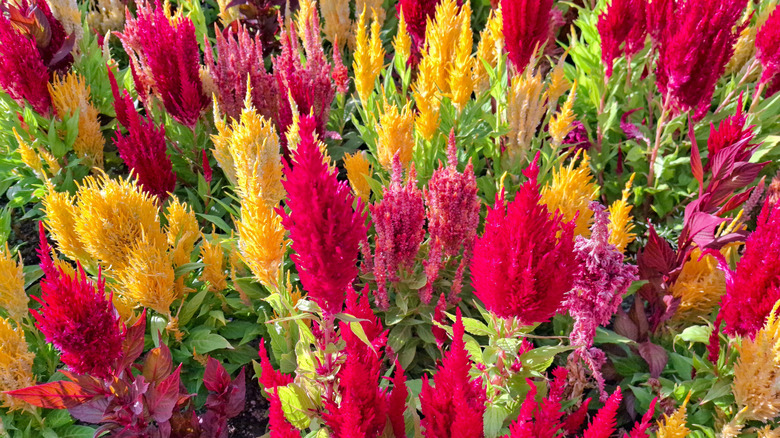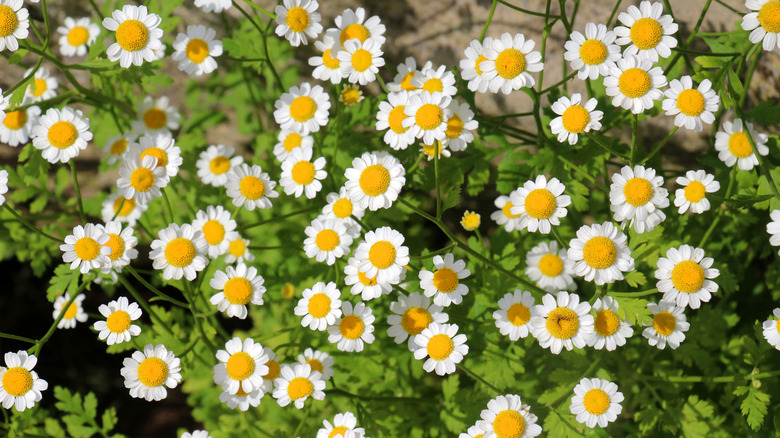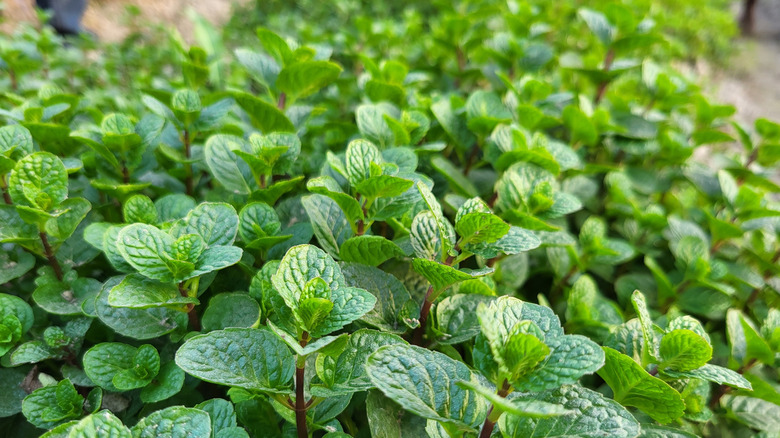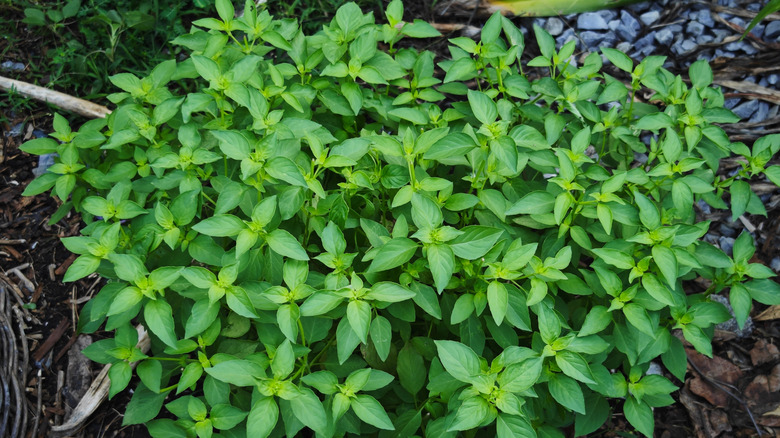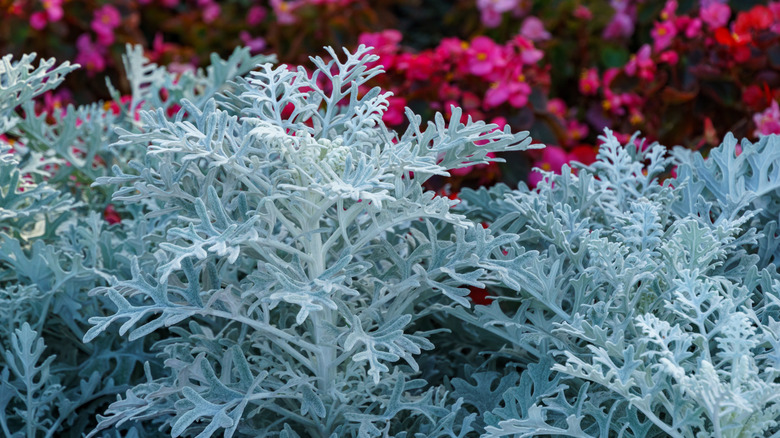9 Easy To Grow Garden Fillers To Complement A Cut Flower Garden
When you're looking for easy to grow cut flowers for your garden, it's understandable to focus on show-stopping blooms and forget all about the fillers you need to add bulk, structure, and contrast to your bouquets. So, not only are we here to remind you that you need to think about growing filler flowers and foliage, but that it doesn't have to be hard. If you want to put your energy into the big, eye-catching blooms, pick easy but pretty fillers to bring plenty of interest to your garden and to your bouquets.
From common flowers that may be growing in your pollinator gardens to herbs that may be growing in your vegetable garden, there are plenty of options for great fillers. Some bring blooms, others bring beautiful scents, and some just provide a nice backdrop so your showier blooms can shine. Whatever you are looking for, there's an easy to grow option that will help fill out your garden and your bouquets.
Yarrow
This North American native plant is the epitome of easy to grow. Yarrow (Achillea millefolium) thrives in poor soil as long as it's well-drained, and cultivars come in a wide variety of colors like white, yellow, and pink. As long as you have full sun, you shouldn't have any problems growing this low maintenance plant. Their umbrella-shaped flowers provide a bit of interest in bouquets, but won't steal the show from your other cut flowers. They bloom from June through September, so you will have plenty of time to harvest flowers as they fill in.
Baby's breath
Is there any flower more synonymous with "filler" than baby's breath (Gypsophila paniculata 'Perfekta')? These tiny white blooms have been taking up space in bouquets for as long as we can remember, but these mounds of flowers also work well to cover areas in the summer garden where spring blooms have come and gone. They can grow in average soil as long as it's well-drained and the plants get full sun. These plants are considered invasive in many areas across the U.S., however, so plant with caution.
Bells of Ireland
It can be hard to tell whether Bells of Ireland (Molucella laevis) is foliage or flower because of its unusual, green calyx that grows around the bloom with leaves in between. These unique monochromatic plants are not hard to grow, but sowing seeds may be your biggest challenge. Cold stratification is a must, and soaking the seeds can help speed germination. Once you see a sprout, transplant them to a seed starting tray. In cold enough climates, you can direct sow in the early spring.
Celosia
If you're looking to add texture with little effort, it's time to plant celosia (Celosia argentea). This plant prefers full sun and rich, well-drained soil but will cope with much less ideal circumstances. The many cultivars come in a wide variety of colors and shapes like plumes, cockscombs, and brains. Beware, this tropical plant does not like the cold. If you live in a cool area, these plants might need some cover and are only hardy in USDA Zones 10 and above. However, if you live in a warmer area, they are easy to grow.
Feverfew
The daisy-like flowers of feverfew (Tanacetum parthenium) grow up to 3 feet tall and 2 feet wide, taking up space in your cutting garden and providing plenty of filler for your bouquets. It's not picky about soil conditions as long as it drains well and there's plenty of sun to go around. It also happens to be drought-tolerant and attracts pollinators and beneficial insects that will help the rest of your garden thrive. It tends to self-seed and naturalize within gardens, so you won't have to worry about reseeding every year if you leave some blooms on the plant.
Mint
Filler plants in your garden and in your bouquets do not need to be flowers — herbs can also get the job done — and few herbs grow more easily than mint (Mentha spicata). It grows in full sun or partial shade, and can tolerate almost any soil. The main downside to growing mint you should know about is that it has a tendency to take over gardens, so many gardeners choose to grow this in containers rather than spend their time trying to keep it from running wild in the garden.
Basil
Another herb that can add lovely foliage to your cut garden is basil (Ocimum basilicum). Depending on which variety you buy, you can add glossy green leaves or dramatic purple foliage to your bouquets. Like mint, basil will also add a lovely scent to your cut flowers. Basil is less tolerant of dry soil than many of the Mediterranean herbs commonly grown in kitchen gardens, and tends to start to flower when under stress. However, if you're not growing basil for cooking, flowers may be just what you're looking for. Learn how to grow and care for basil plants.
Dusty miller
If you're looking for an ornamental filler that brings a lot to the cutting garden without a lot of work, dusty miller (Jacobaea maritima) is a must. These velvety flowers will add a hint of luxury to your garden, but they don't ask much in return. Native to the Mediterranean region, they are drought-tolerant and thrive in light, well-drained soil. They won't need fertilizing, and removing flowers will promote more foliage growth. With no major pests to speak of, these plants are an easy addition to your garden that can add pale texture and color to your bouquets.
Bachelor's buttons
Another aggressive grower, bachelor's buttons (Centaurea cyanus) or cornflower will handle poor soil, no fertilization, and still reseed itself aggressively. Deadheading this plant for cut flowers will help control the spread, but this vigorous grower will happily fill in bare spots in the garden as long as it gets enough sun. Growing 3 feet tall and 2 feet wide, too much shade will make bachelor's buttons floppy. Typically, the bright blue, spidery flowers are as striking in the garden as they are in bouquets. Pink and white cultivars can be found as well, blooming throughout the summer.

